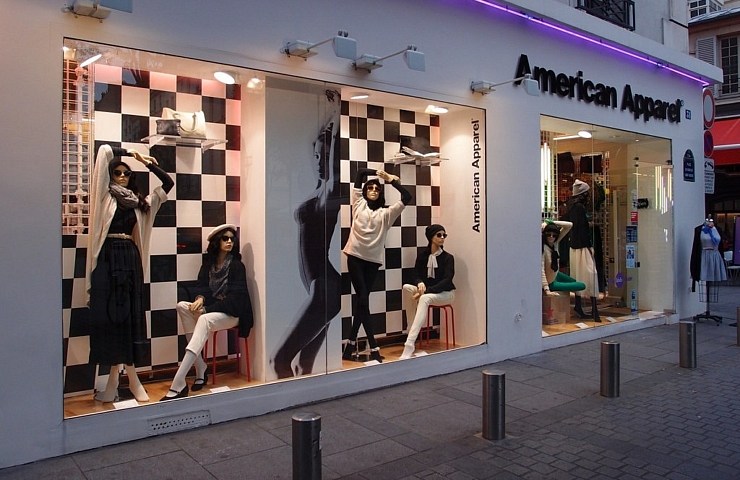I was one of many to be devastated when American Apparel announced their second bankruptcy. AA was the one clothing store that restored some of my faith in our modern capitalist economy. Their sweatshop free promise ensured their buyers that the hundreds of dollars spent at the store was for a good cause. That their workers were American residents, being paid reasonably and placed in safe, healthy environments. But what did their bankruptcy mean? Was I ever going to be able to spend $7 on a cute denim scrunchie again? Was I never going to experience the pain of finding the right size of Easy Jeans again? I used to spend high school evenings walking the streets of Dunlavy and Westheimer in Montrose, in search of secondhand apparel, finding the latest trends and selections that some even dated back to the ’60s. Inevitably, I’d stumble upon American Apparel, being reeled in by their intriguing “10% off!” sale signs, and enticing mannequin displays. This was the place I wished I could afford, but soon after realized I’d primarily be a window shopper.
Despite it’s great cause, American Apparel’s combination of high prices and simple designs have recently taken the brand into a huge deficit. The company reported to be $177 million in debt, but this wasn’t only due to their hipster buyers boycotting AA’s expensive attire. In addition, founder Dov Charney’s many legal battles have been a great contributor to the company’s downfall.
This resulted in our beloved American Apparel to shut down hundreds of stores across the nation, including our one and only AA store in Montrose. It’s most likely that it won’t be reopening any time soon since Gildan Activewear Inc. bid $88 million for the brand and an extra $15 million to acquire the company’s previous purchase orders and inventory. Despite this being their second bankruptcy in two years, companies like Amazon Inc., Forever 21 Inc. and 10 others bid for AA. Gildan Activewear Inc., a Canadian-American manufacturer of branded clothing outbid all 11 ensuring that their online platform would remain, but they’re making no promises for all of AA’s 110 US stores.
The question we’re all wondering is, will Gildan keep American Apparel’s promise of a sweatshop free establishment? Or is it going to be just another American clothing brand making substantial profit from poor, mistreated foreign workers?





Recent Comments